If you’re battling hard water, you need a solution that’s reliable, efficient, and worth every penny. Let me tell you, the Clack water softener—specifically the Pro Series WS100—has been a game-changer for my home.
With its top-notch control valve and high-capacity resin, it tackles hard water like a pro, leaving your dishes sparkling and your skin softer. Trust me, after wrestling with scale buildup and dull laundry, this system is a must-have for anyone serious about water quality.
Here’s my full experience, pros, cons, maintenance tips, and how it stacks up against the competition.
My Experience With The Clack Water Softener
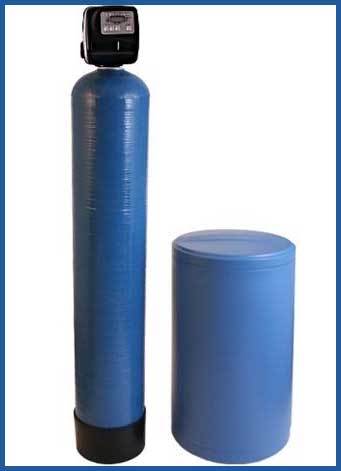
Picture this: my faucets were caked with chalky white scale, my laundry felt like cardboard, and my skin was drier than a desert after every shower.
Hard water was the culprit, and I was fed up.
After researching, I landed on the Clack Pro Series WS100 On Demand Water Softener, distributed by Discount Water Softeners.
I was skeptical—Clack doesn’t make full water softeners, just components like control valves and tanks, so I wondered if this “Frankenstein” system could deliver.
Spoiler alert: it did.
Installing it was a breeze with the Quick Pro Connector kit. I’m no plumber, but the hand-tighten unions and clear manual made it feel like assembling IKEA furniture—doable with a little patience. Within hours, my water felt different. My soap lathered like a dream, and my dishes came out of the dishwasher spotless.
The 10% crosslink resin, engineered with Aldex technology, is the star here. It’s like a sponge for calcium and magnesium, stripping them out efficiently. I chose the 48,000-grain capacity model, perfect for my family of four, and it’s been chugging along without needing constant babysitting.
The control valve is a standout. It’s intuitive, with a digital display that lets you tweak settings like regeneration cycles. I set it to regenerate based on water usage, which saves salt and water compared to timed systems.
After a month, I noticed my shampoo usage dropped by nearly half, and my water heater wasn’t groaning under scale buildup. My only hiccup was a slight salt bridge in the brine tank, but a quick poke with a broom handle fixed it.
Overall, the WS100 transformed my home’s water, making daily life cleaner, softer, and frankly, more enjoyable.
Pros of The Clack Water Softener
- High-Efficiency Resin That Packs a Punch
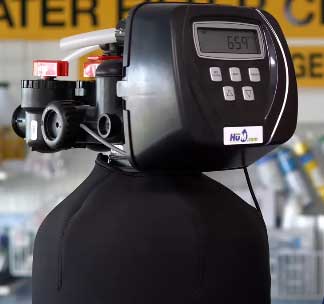
The 10% crosslink resin in the WS100 is a beast.
Unlike the standard 8% resin in many softeners, this one grabs onto hardness minerals like nobody’s business.
It’s engineered with Aldex technology, which means it exchanges ions faster and lasts longer.
I’ve noticed fewer regeneration cycles compared to my old softener, which saves me on salt costs.
For a household with moderate to high water usage, this resin is a lifesaver, keeping your water soft without constant maintenance.
- User-Friendly Control Valve
Clack’s control valve is like the brain of the operation, and it’s brilliant. The WS1EE model, with its five-button setup, is a dream to program. You can customize regeneration based on water usage, which is perfect if your household’s water needs fluctuate.
The digital display is clear, and the manual walks you through every step. I love that it’s meter-based, so it only regenerates when necessary, cutting down on water and salt waste. It’s like having a smart assistant for your water softener.
- Versatile Grain Capacities
Whether you’re a solo dweller or running a bustling household, the WS100 has options. It comes in grain capacities from 24,000 to 120,000, so you can pick what fits your needs. I went with 48,000 grains, which handles my family’s daily showers, laundry, and dishwashing without breaking a sweat.
Larger households or those with harder water might opt for the 80,000 or 120,000-grain models, which means less frequent regeneration and more convenience.
- Solid Warranty Coverage
Clack’s warranty gives me peace of mind. The resin and brine tanks come with a 10-year warranty, while the control valve gets five years. That’s pretty generous for a salt-based system that sees heavy use.
Sure, wear-and-tear parts like the piston or brine valve aren’t covered, but that’s standard. Knowing the core components are backed for years makes the investment feel secure.
- Easy Installation for DIYers
I’m not a handyman, but the WS100’s design made installation a cinch. The Quick Pro Connector kit uses simple hand-tighten unions, so you don’t need a toolbox full of specialty gear. The manual is clear, and the system’s 1-inch porting ensures good flow rates with minimal pressure drop.
If you’re comfortable with basic plumbing, you can save hundreds by skipping a professional installer.
Not-So-Good Parts of The Clack Water Softener
- Not a True Clack Product

Here’s the kicker: Clack doesn’t make complete water softeners.
The WS100 is assembled by third parties like Discount Water Softeners, using Clack’s valves and tanks.
This “Frankenstein” setup works well, but it’s frustrating not knowing who makes the other components.
I’d love more transparency about the full system’s origins, as it makes me wonder about consistency across units.
- Limited Filtration Capabilities
If you’re hoping for a one-stop water treatment solution, the WS100 might disappoint. It softens water like a champ but doesn’t filter out contaminants like bacteria, heavy metals, or chlorine.
I had to pair mine with a separate sediment filter to tackle iron in my well water. If your water has issues beyond hardness, you’ll need additional filtration, which adds to the cost and space requirements.
- Maintenance Can Be a Chore
Salt-based systems like the WS100 require regular upkeep. You’re checking salt levels, cleaning the brine tank, and occasionally dealing with salt bridges or mushing. It’s not rocket science, but it’s more hands-on than salt-free conditioners.
If you neglect maintenance, efficiency drops, and you might face costly repairs. For busy folks, this can feel like one more thing on the to-do list.
- Pricey for Some Budgets
The WS100 isn’t cheap. Depending on the grain capacity, you’re looking at $1,000 to $2,500, plus salt and maintenance costs. While it’s cost-effective long-term due to reduced appliance repairs and soap usage, the upfront hit can sting.
If you’re on a tight budget, smaller or salt-free systems might be more appealing.
- Hard to Find Online
Clack restricts online sales to traditional dealers, so finding the WS100 can be a hassle. You can’t just hop on Amazon and have it delivered. I had to call Discount Water Softeners directly for pricing, which felt like a step back in time.
This limited availability might frustrate folks who prefer the convenience of online shopping.
Maintenance Tips For The Clack Water Softener
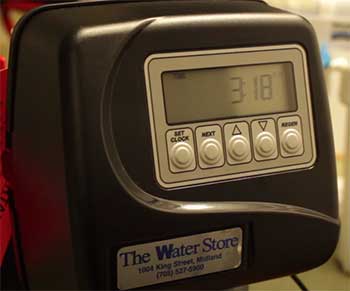
- Keep the Brine Tank Stocked: Your brine tank is the heart of the softening process, so keep it at least half-full with salt pellets. I check mine monthly and top it off with high-purity salt pellets to avoid impurities. This ensures proper regeneration and prevents salt bridges—those pesky crusts that block the brine solution. If you spot a bridge, break it up gently with a broom handle.
- Clean the Resin Tank Annually: Iron and mineral buildup can clog the resin bed, so give it a yearly cleaning. I use a resin cleaner like Iron Out, following the manual’s instructions. Disconnect the system, add the cleaner to the brine tank, and run a manual regeneration cycle. This keeps the resin working efficiently and extends its lifespan.
- Inspect for Leaks and Wear: Every few months, check the control valve, piston, and seals for leaks or wear. I had a minor drip once, which a quick tighten fixed. If you notice reduced performance, like harder water, it might be time to replace worn parts. Clack’s customer support is solid for troubleshooting, and parts are widely available.
- Use a Pre-Filter for Extra Protection: If your water has sediment or iron, like mine, install a pre-filter before the softener. I use a 1-micron cartridge filter to catch debris, which protects the resin and reduces maintenance. Replace the filter annually or when you notice a pressure drop to keep things running smoothly.
- Program Smart Regeneration: The WS1EE’s meter-based regeneration is a lifesaver, but you need to set it right. I programmed mine based on my household’s water usage (about 300 gallons daily). Check the manual to calculate your needs, and adjust settings seasonally if your usage changes. This minimizes water and salt waste, keeping costs down.
Comparison of Clack Water Softener With Other Brands
I’ve spent time digging into how the Clack Pro Series WS100 holds up against other big names in the water softener world: RainSoft, Aquasure, Culligan, and Morton. Each brand has its strengths, but let’s break it down head-to-head to see where Clack shines and where it might fall short.
Here’s my take based on real-world use and research, keeping it straightforward and relatable for anyone shopping for a softener.
- Clack Pro Series WS100 Vs. RainSoft EC5 Series
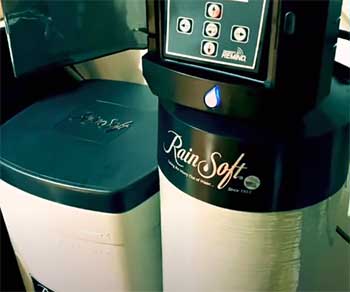
RainSoft’s EC5 Series is a premium player with a sleek design and smart features.
I was drawn to its Wi-Fi connectivity, which lets you monitor salt levels and regeneration via an app—pretty cool if you’re into tech.
The EC5 boasts a high-efficiency resin similar to Clack’s 10% crosslink, but its flow rate tops out at 20 GPM, while Clack’s WS100 handles 3.5–35 GPM, making it better for larger homes. RainSoft’s lifetime warranty on tanks is a step above Clack’s 10-year coverage, but you’ll pay for it—EC5 systems often start at $3,000, nearly double Clack’s $1,500 average.
Installation is another hurdle; RainSoft requires professional setup, adding costs, while Clack’s DIY-friendly Quick Pro Connector saved me hundreds. If you want luxury and don’t mind the price, RainSoft’s bells and whistles impress. For value and versatility, I lean toward Clack.
- Clack Pro Series WS100 Vs. Aquasure Harmony Series
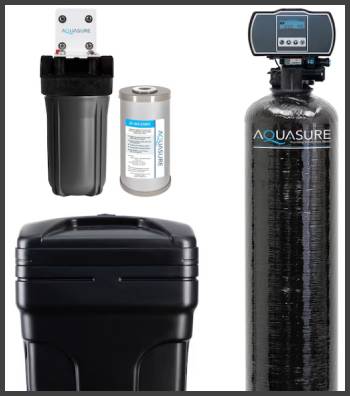
Aquasure’s Harmony Series caught my eye with its dual-tank option, which ensures soft water even during regeneration—a big plus for busy households.
Its 48,000-grain model matches Clack’s capacity, but the dual-tank setup pushes prices past $2,500, compared to Clack’s $1,500 for a single tank.
Aquasure’s ¾-inch porting can bottleneck flow in larger homes, while Clack’s 1-inch porting keeps water moving smoothly.
Both use meter-based regeneration, but Clack’s WS1EE valve feels more intuitive to program, with a clear digital display.
Aquasure’s resin is solid but lacks the Aldex-engineered edge of Clack’s 10% crosslink, which regenerates less often. If you need uninterrupted soft water and have the budget, Aquasure’s dual tanks are tempting. For most homes, Clack’s single-tank efficiency and lower cost get the job done.
- Clack Pro Series WS100 Vs. Culligan High Efficiency (HE) Series

Culligan’s HE Series is a household name, and its reputation is well-earned.
The HE model offers flow rates up to 15 GPM and a smart meter that rivals Clack’s WS1EE for efficiency.
I liked Culligan’s Aqua-Sensor technology, which adjusts regeneration based on water hardness, potentially saving salt.
However, Culligan’s resin is standard 8%, less robust than Clack’s 10% crosslink, meaning more frequent regeneration for hard water. Price-wise, Culligan starts around $2,000, and professional installation is often mandatory, unlike Clack’s DIY option.
Culligan’s service network is a plus—dealers handle maintenance—but it locks you into their ecosystem, with pricier parts. Clack’s valve is industry-standard, so repairs are cheaper and easier to source. If you value brand trust and service, Culligan’s a safe bet. For performance and affordability, Clack edges out.
- Clack Pro Series WS100 Vs. Morton System Saver M34
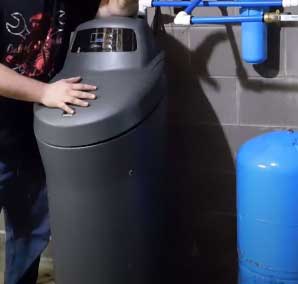
Morton’s System Saver M34 is a budget-friendly option, often found at big-box stores for under $1,000.
Its 34,000-grain capacity is slightly smaller than Clack’s 48,000-grain WS100, better suited for smaller households.
Morton’s valve is simpler but less customizable than Clack’s WS1EE, and its timed regeneration wastes more salt and water compared to Clack’s meter-based system.
Flow rate is another gap—Morton maxes out at 11 GPM, while Clack’s 35 GPM handles high-demand homes with ease.
Morton’s resin is standard, requiring more frequent maintenance than Clack’s Aldex-engineered bed. On the plus side, Morton’s easy availability and low upfront cost make it appealing for tight budgets. If you’re pinching pennies, Morton’s fine for light use.
For long-term efficiency and power, Clack’s WS100 is worth the extra investment.
Why Clack Holds Its Own?
Clack’s WS100 strikes a sweet spot. It doesn’t have RainSoft’s fancy app or Aquasure’s dual tanks, but its high-capacity resin and versatile flow rate outperform for most homes.
Culligan’s service network and Morton’s low price are tempting, but Clack’s DIY-friendly setup, industry-standard valve, and cost-effective maintenance make it a standout. It’s not perfect—no softener is—but for balancing performance, price, and ease of use, Clack’s tough to beat.
Frequently Asked Questions (FAQ)
Absolutely, they’re fantastic for softening water. The Clack Pro Series WS100, with its high-capacity resin and reliable WS1EE valve, delivers soft water that transforms your home. It tackles scale, saves soap, and protects appliances. While it doesn’t filter contaminants, its efficiency and ease of use make it a top choice for hard water woes. Just pair it with a filter if you need more than softening.
With proper maintenance, a Clack water softener can last 10–15 years. The resin bed typically needs replacement every 10 years, depending on water quality and usage. The control valve and tanks are durable, often lasting the system’s lifespan with regular care like salt refills and annual cleaning. My WS100 is going strong after two years with no issues.
It depends on your needs. Clack’s WS100 is my pick for value and reliability, especially for medium to large households. Fleck’s 5600SXT is great for customization, SpringWell SS1 for tech lovers, and Aquasure Harmony for high-demand homes. Test your water hardness and usage to choose. Clack’s balance of cost and performance makes it a strong contender.
Clack valves, like the WS1 and WS1EE, are used by brands like Aquatell, HUM, Water Depot, and Nelsen. The Clack Pro Series WS100, distributed by Discount Water Softeners, is a popular model. These valves are industry standards, so you’ll find them in many residential and commercial systems, known for their reliability and ease of repair.
Conclusion: Why You Should Get A Clack Water Softener?
After living with the Clack Pro Series WS100, I can’t imagine going back to hard water. It’s transformed my home—cleaner dishes, softer clothes, and happier skin. The high-capacity resin, user-friendly valve, and solid warranty make it a no-brainer for anyone fighting scale and mineral buildup.
Despite minor maintenance hassles and limited filtration, its performance and value are unmatched. If you want soft water without breaking the bank, grab a Clack system. You’ll thank yourself every time you step out of the shower.
